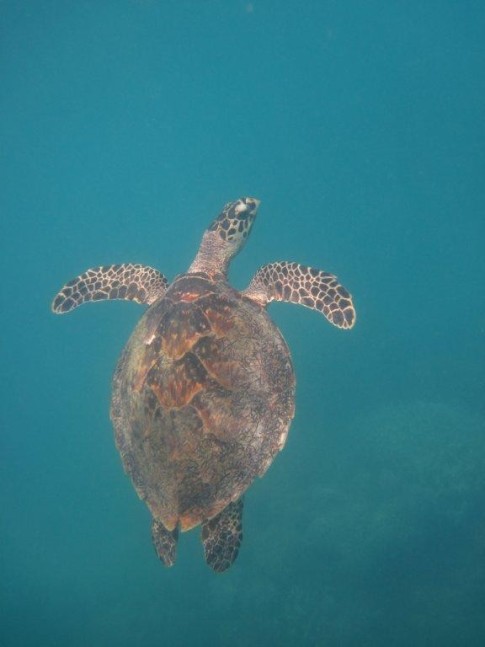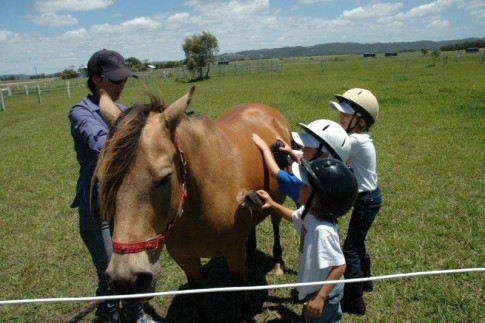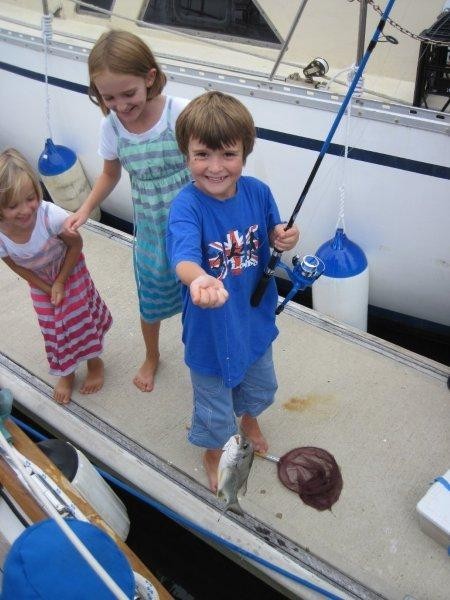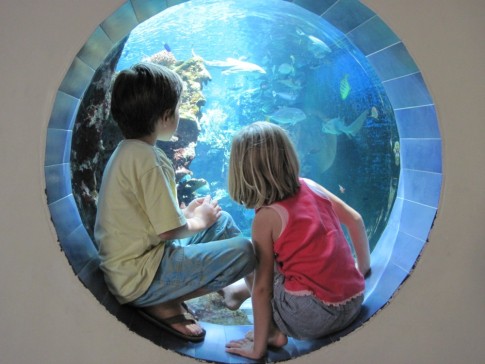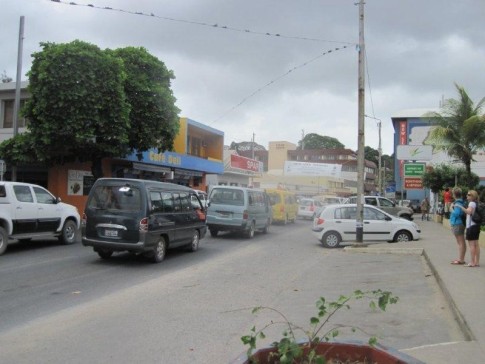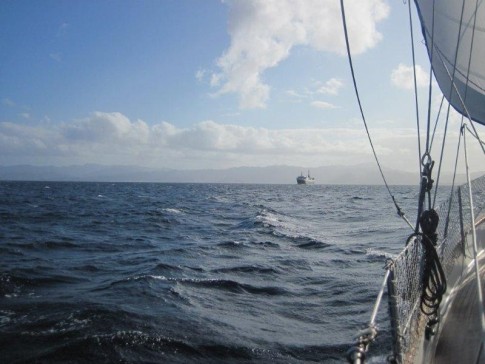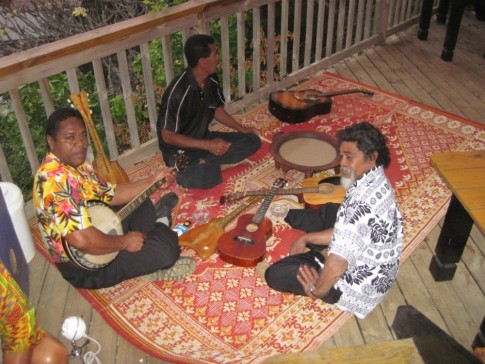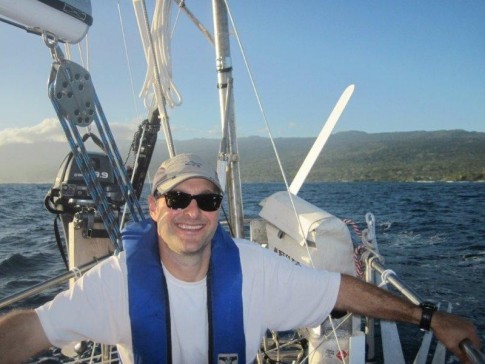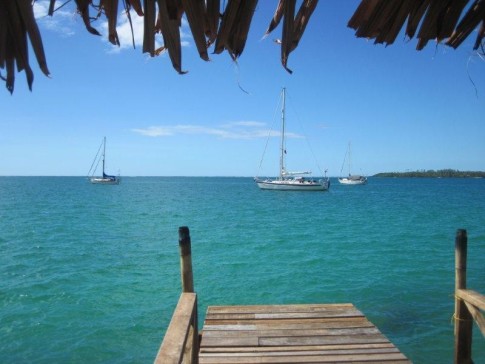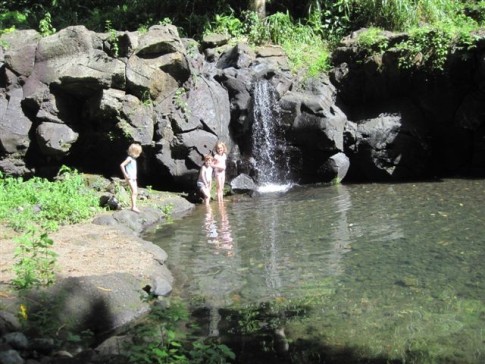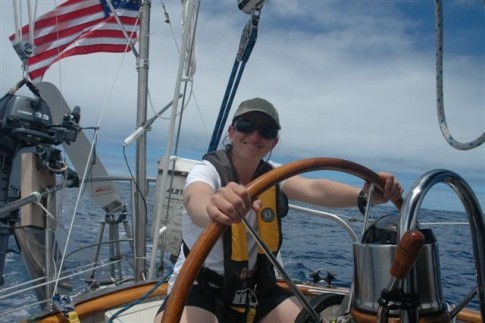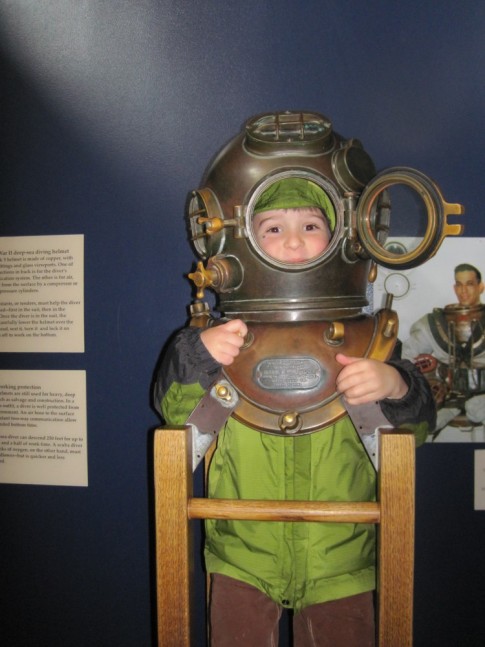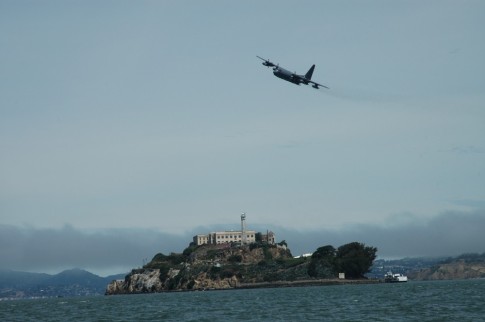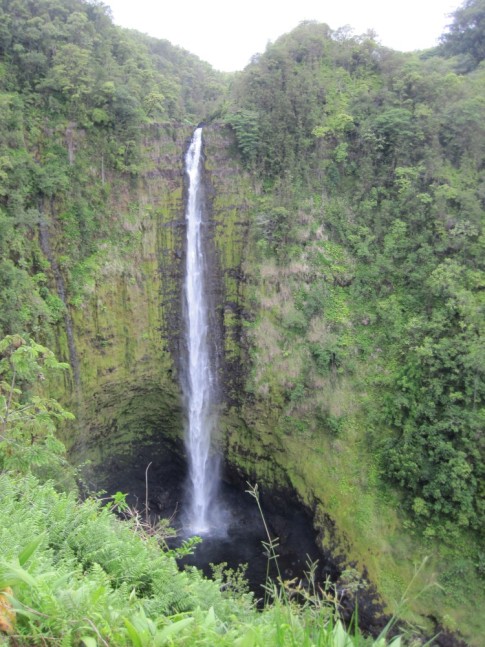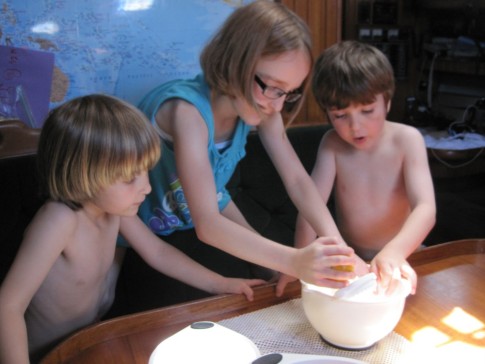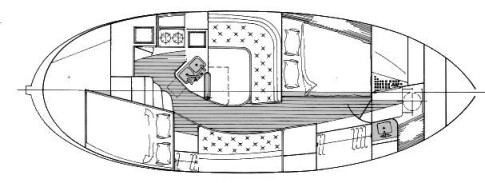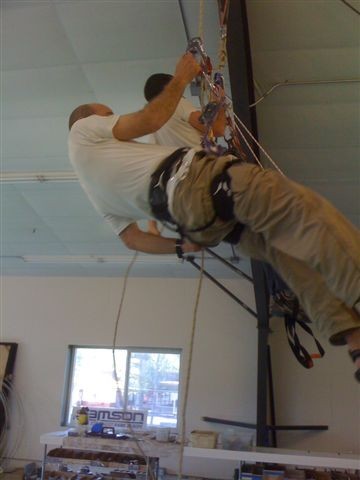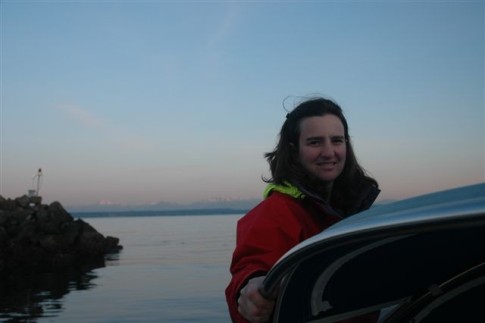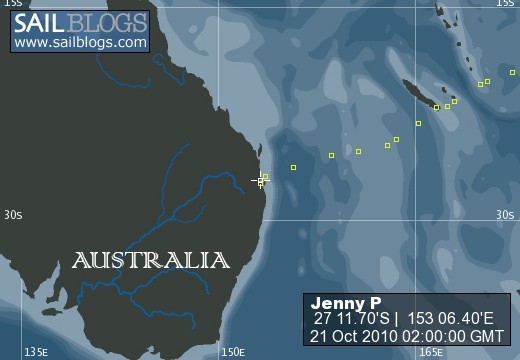
Pacific Odyssey 2010/2011
Follow the Larsens from Seattle to Australia and back.
14 February 2011
16 November 2010 | Australia
14 November 2010 | Ballina, NSW
10 November 2010 | Scarborough, QLD
02 November 2010
22 October 2010 | Brisbane
16 October 2010
15 October 2010
14 October 2010
08 October 2010 | Vanuatu
01 October 2010 | Noumea, New Caledonia
28 September 2010
28 September 2010
26 September 2010
25 September 2010
23 September 2010
21 September 2010 | Lautoka
19 September 2010
18 September 2010 | Musket Cove, Fiji
16 September 2010
Fijian Village
12 September 2010
Christine
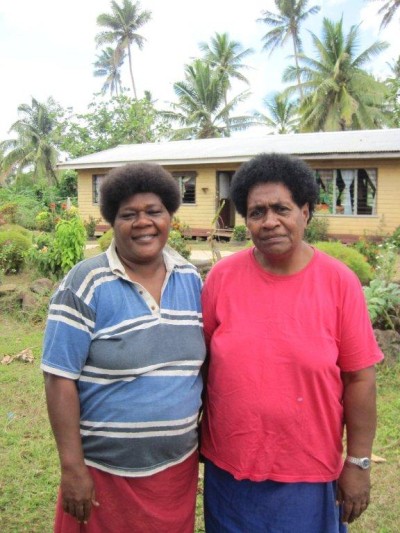
I mentioned in the blog about SavuSavu that we had taken a day trip to Labasa and visited a Fijian village along the way. There is something called SevuSevu here that describes the welcome ritual when a foreigner arrives in a village. Under the guidance of our taxi driver, we first stopped in the Labasa market before we went to the village in order to buy $5 Fijian worth of Yagoni (Yahn-GO-ni), or Kava root. This we presented to the village chief as our gift when we asked permission to enter his village. The chief is just an ordinary person with no fancy clothes or living quarters. He just happens to be the most respected person in the village. We were invited into his house, and shown were to sit on the floor. The kids sat down cross legged with no shoes, while Eric and I were asked to sit on the only two chairs they had. The chief sat cross legged amongst his few family members that happened to be in the house with him at the same time. He gave a speech during which his family clapped short rhythms at certain points. Once it was over, they smiled and said "Ok, you can go now." The point of the speech was the heart of the SevuSevu. When a foreigner comes to a village, he asks the chief for permission and all the reasonable protections that can be afforded. If the chief accepts the Kava root, he is taking on the responsibility of protecting the visitor. As the visitor leaves, there is a special way of saying good-bye that literally releases the chief of his obligation of protection. We clearly did not need the protection and felt very safe visiting the village, but it is a ritual that lingers and remains quite strong. It appeared the chief's family was actually happy to have had the brief ceremony.
Now for the ironic part - we were taken to the village to see a curiosity - stones where people were killed before they were eaten during cannibal times. We didn't know that is what we'd be shown; we just followed the taxi driver's guidance along the way to Labasa. I don't think I would have asked to see such a site, but there we were. Maloni, a nice woman from the village, walked us to the stones and explained what happened where: "this is the stone used to chop people's heads off" and then "this is the stone where the head was placed so the blood could drip out, see the little pocket where the head would sit? We don't do this anymore; our grandfathers did that." She explained this as a matter of fact, no remorse or revulsion, just a notion of a time long ago. Eleanor, Malonoi's sister-in-law, joined us at the stones and she too said wistfully, "our forefathers."
Cannibalism occurred throughout the islands we've visited, but Fiji is the first time it has been a topic so out in the open. In Samoa we read a plaque on a statue at the Robert Louis Stevenson museum recounting the legend of a prince whose father would regularly eat young men until his son took the place of one of the offerings and just before he was killed; the King suddenly realized what he had been doing was wrong. His son pleaded with him to stop eating people and from then on he ate fish. So the story goes. In Tonga an expat from Australia owned a South Pacific artifacts store where you could purchase an authentic cannibal axe used to chop heads in the late 1800's. Eric noted this kind of shop was like Borgen & Burkes from Harry Potter - the Diagon Alley shop selling dark artifacts to Death Eater families such as the Malfoys. While the practice existed in Samoa and Tonga, you had to seek out the legend or go into the shop to bump into it. Here in Fiji it is much more a daily topic of history.
I took the kids to the market yesterday so they could spend their souvenir allowances. We were looking around at the handicrafts when a lady came up to us holding carved, four-pronged forks. She smiled as she held them up and said, "Oh, you might like these cannibal forks. The small one you can use for your salads and the big one is great for the BBQ. Nice price if you buy both." Looking at her kind face holding an object that replicates what was used to eat people not so long ago was such a confusing moment. The topic (let alone the practice) of cannibalism clearly represents a cultural divide.
Now for the ironic part - we were taken to the village to see a curiosity - stones where people were killed before they were eaten during cannibal times. We didn't know that is what we'd be shown; we just followed the taxi driver's guidance along the way to Labasa. I don't think I would have asked to see such a site, but there we were. Maloni, a nice woman from the village, walked us to the stones and explained what happened where: "this is the stone used to chop people's heads off" and then "this is the stone where the head was placed so the blood could drip out, see the little pocket where the head would sit? We don't do this anymore; our grandfathers did that." She explained this as a matter of fact, no remorse or revulsion, just a notion of a time long ago. Eleanor, Malonoi's sister-in-law, joined us at the stones and she too said wistfully, "our forefathers."
Cannibalism occurred throughout the islands we've visited, but Fiji is the first time it has been a topic so out in the open. In Samoa we read a plaque on a statue at the Robert Louis Stevenson museum recounting the legend of a prince whose father would regularly eat young men until his son took the place of one of the offerings and just before he was killed; the King suddenly realized what he had been doing was wrong. His son pleaded with him to stop eating people and from then on he ate fish. So the story goes. In Tonga an expat from Australia owned a South Pacific artifacts store where you could purchase an authentic cannibal axe used to chop heads in the late 1800's. Eric noted this kind of shop was like Borgen & Burkes from Harry Potter - the Diagon Alley shop selling dark artifacts to Death Eater families such as the Malfoys. While the practice existed in Samoa and Tonga, you had to seek out the legend or go into the shop to bump into it. Here in Fiji it is much more a daily topic of history.
I took the kids to the market yesterday so they could spend their souvenir allowances. We were looking around at the handicrafts when a lady came up to us holding carved, four-pronged forks. She smiled as she held them up and said, "Oh, you might like these cannibal forks. The small one you can use for your salads and the big one is great for the BBQ. Nice price if you buy both." Looking at her kind face holding an object that replicates what was used to eat people not so long ago was such a confusing moment. The topic (let alone the practice) of cannibalism clearly represents a cultural divide.
| Vessel Name: | Jenny P |
| Vessel Make/Model: | Hans Christian 33T |
| Hailing Port: | Seattle, Washington |
| Crew: | Eric, Christine and family |
| About: | Sophie 10 Finn 7 Freya 5 |
| Extra: | After sailing in the Pacific Northwest for 10 years, we are preparing to sail to the South Pacific |
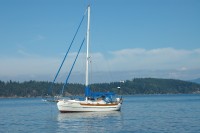
Who: Eric, Christine and family
Port: Seattle, Washington
Favorites
No Links Added Yet
